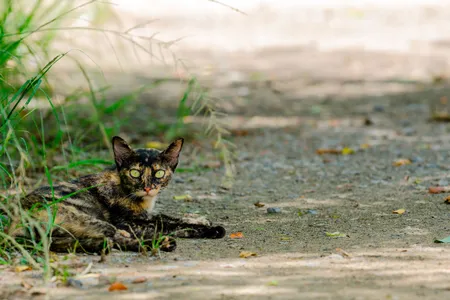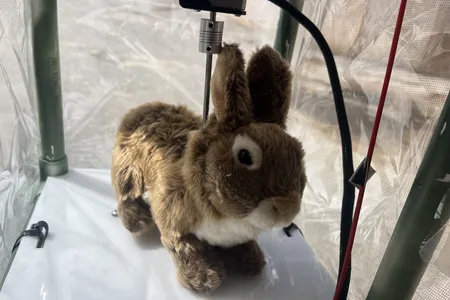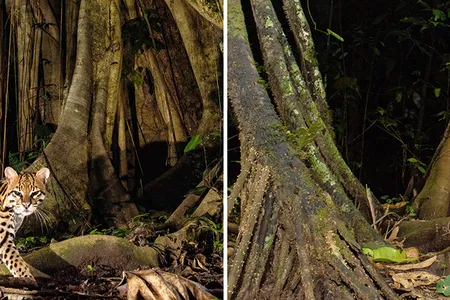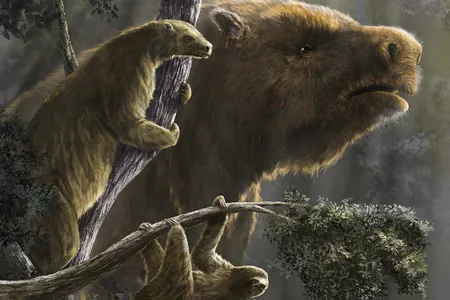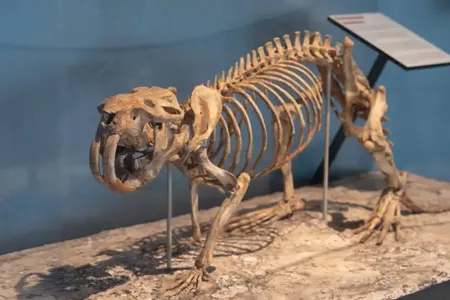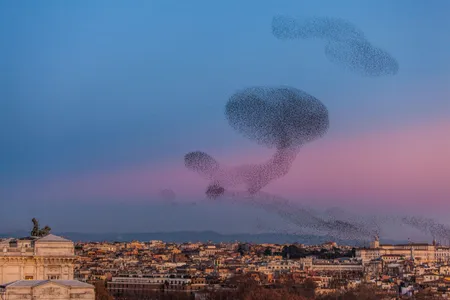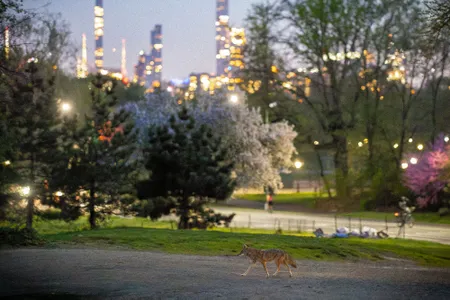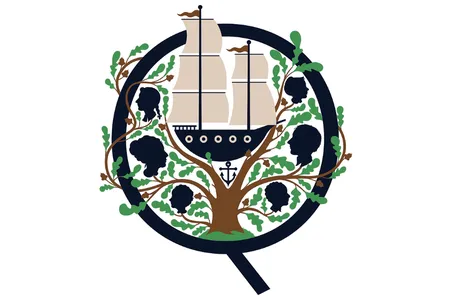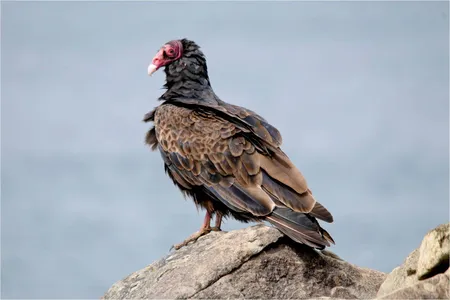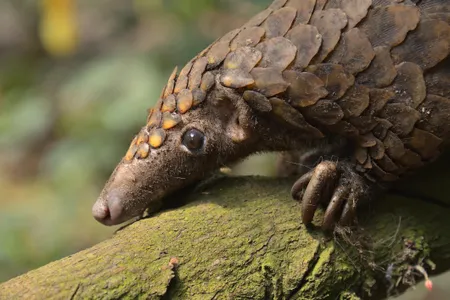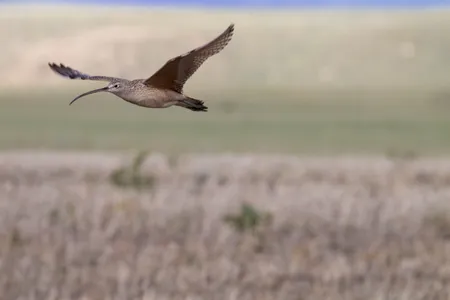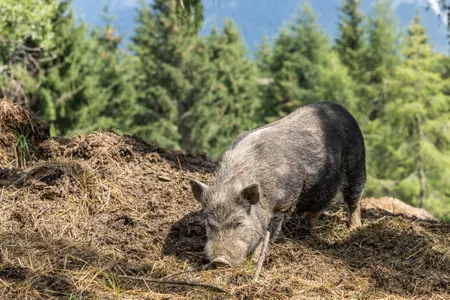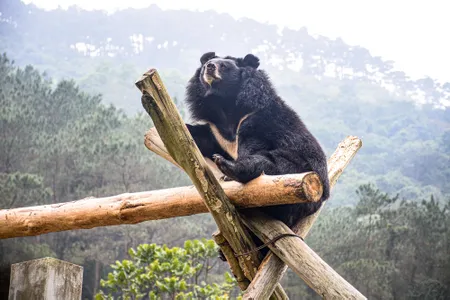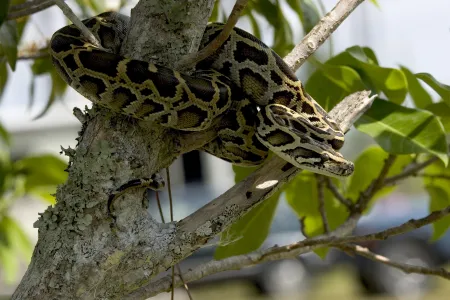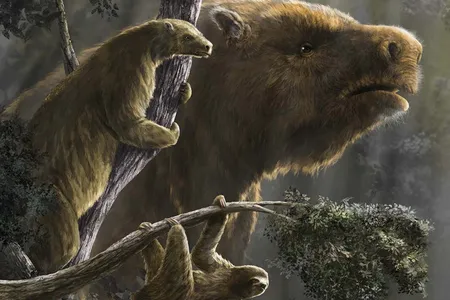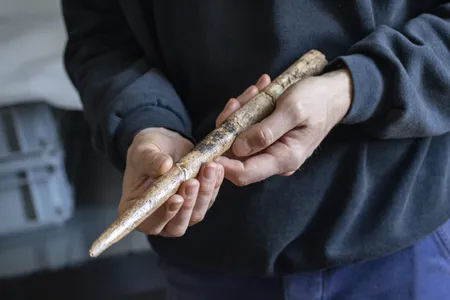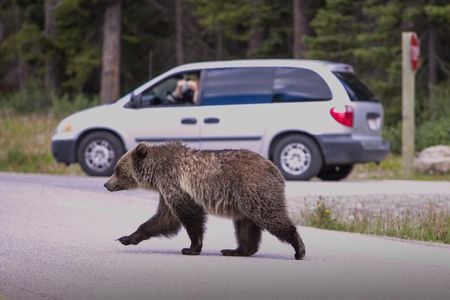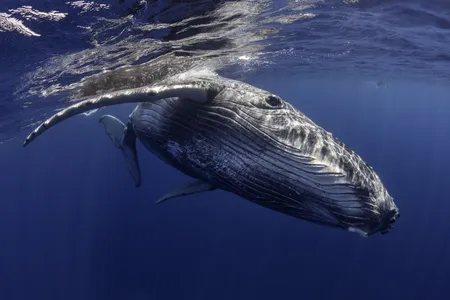Why Fire Island Has Seen an Explosion of Feral Cats
In New York’s only federal wilderness area, the loss of a key predator has led to the rise of a new one—with dire consequences for the island’s native birds
‘Robo-Bunnies’ Are the Newest Weapon in the Fight Against Invasive Burmese Pythons in Florida
Scientists are experimenting with robotic rabbits in hopes of luring the destructive snakes out of hiding so they can be euthanized
Video Reveals an Unlikely Bond Between Ocelots and Opossums in the Amazon, Walking Together Like ‘Old Friends’
Researchers captured the footage by surprise, with cameras initially set up to record bird behavior
Giant Sloths and Many Other Massive Creatures Were Once Common on Our Planet. With Environmental Changes, Such Giants Could Thrive Again
If large creatures like elephants, giraffes and bison are allowed to thrive, they could alter habitats that allow for the rise of other giants
Bear-Sized Giant Beavers Once Roamed North America, and They’re Now the Official State Fossil of Minnesota
The large, extinct creatures roamed the Twin Cities area more than 10,000 years ago and could grow to more than 200 pounds
A Closer Look at the Kestrels, Hedgehogs and Other Wild Animals That Inhabit Rome
From antiquity to modern times, the city has been rife with creatures that creep, slither, scurry and nest among its pillars and palaces
These Killer Whales Make Tools From Kelp to Massage Each Other in a Newly Discovered Grooming Behavior
Dubbed “allokelping,” it might be a unique cultural phenomenon that’s as endangered as the orca population itself
In a Milestone for Manhattan, a Pair of Coyotes Has Made Central Park Their Home
For six years, two photographers have carefully followed the canines and documented their secret lives
How Do I Research Ancestors Who Sailed to America in the 1600s? And More Questions From Our Readers
You’ve got questions. We’ve got experts
Scavenger Animals Are in Trouble, and That Could Spell Bad News for Human Health
More than one-third of species that eat some amount of carrion are threatened or declining, a new analysis finds, and that could lead to a rise in zoonotic diseases
The World’s ‘Most Trafficked Mammal’ Might Soon Be Protected by the U.S. Endangered Species Act
The Fish and Wildlife Service has proposed listing seven species of pangolin, often poached for their scales and meat, as endangered
Nesting Birds Eavesdrop on Prairie Dog Alarm Calls to Keep Their Eggs Safe From Grassland Predators
New research suggests long-billed curlews keep an ear out for warnings from prairie dogs in order to hide from predators and protect their nests
Wild Pigs Are Causing Big Problems in California’s Bay Area, and Their Population Seems to Be Growing
Land managers and other authorities are ramping up efforts to trap and kill the destructive, non-native animals
These Asian Bears Were Cut Open for Their Bile. Here’s What’s Being Done to Rehabilitate Them
Veterinarians in Vietnam perform surgeries, prepare special diets and craft recovery routines for moon bears to give them a better life
Florida Bobcat Kills 13-Foot Python for the First Time on Record. It’s a Sign of Nature ‘Fighting Back’ Against the Invasive Snakes
Burmese pythons are wreaking havoc on the Everglades ecosystem, but some native animals have been known to prey on the enormous reptiles
A Fungal Disease Ravaged North American Bats. Now, Researchers Found a Second Species That Suggests It Could Happen Again
White-nose syndrome caused millions of bat deaths, and scientists are sounding the alarm that a second fungus could be disastrous if it reaches American wildlife
Giant Sloths the Size of Elephants Once Walked Along the Ground. Here’s How the Massive Animals Evolved and Declined
Researchers analyzed fossils and DNA to get a big-picture view of sloth evolution and determine what drove their immense size variation
Scientists Discover the Oldest Known Tools Made From Whale Bones, Crafted in Western Europe 20,000 Years Ago
Stone Age humans scavenged the skeletons of several whale species along the Bay of Biscay in what is now southwestern France and northern Spain, according to a new study
To Reduce Human and Grizzly Bear Conflicts, Both Species Must Change Their Behavior
Rural Alaskan and Canadian communities are trying to get along with the large mammals
Humpback Whales Can’t See as Well as Scientists Thought, and It Might Explain Why They Keep Getting Tangled in Fishing Gear
Despite having big eyes, the whales can’t make out details of objects more than a few body lengths away, according to a new study
Page 1 of 37
